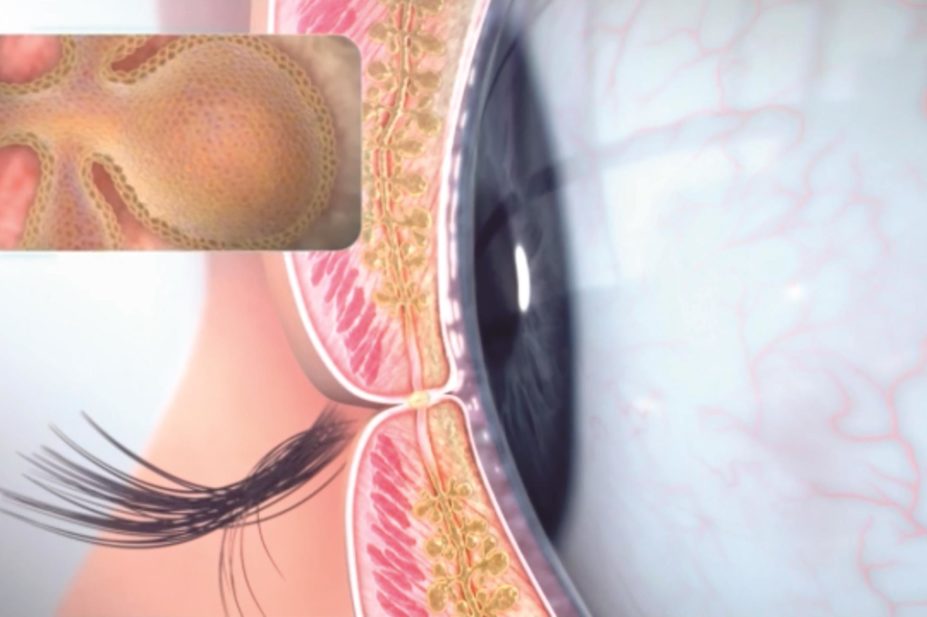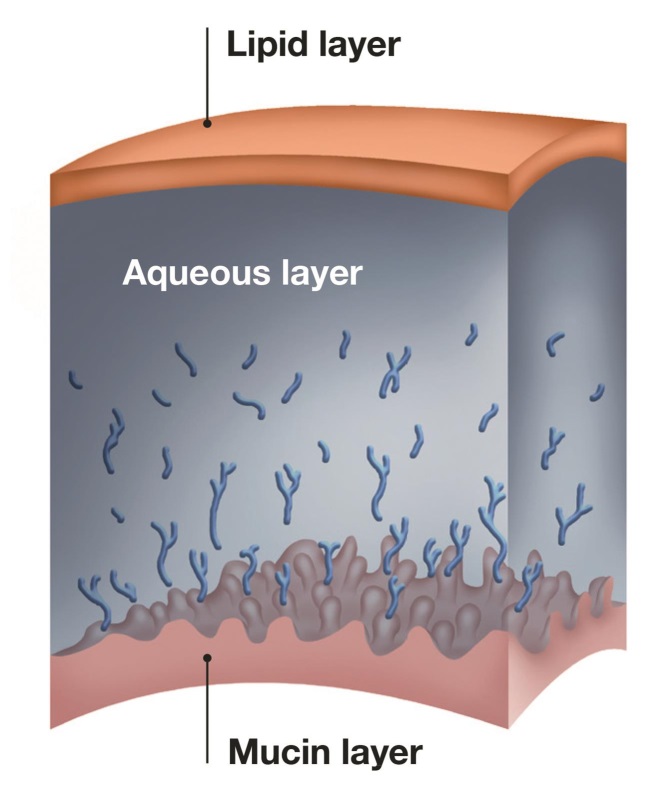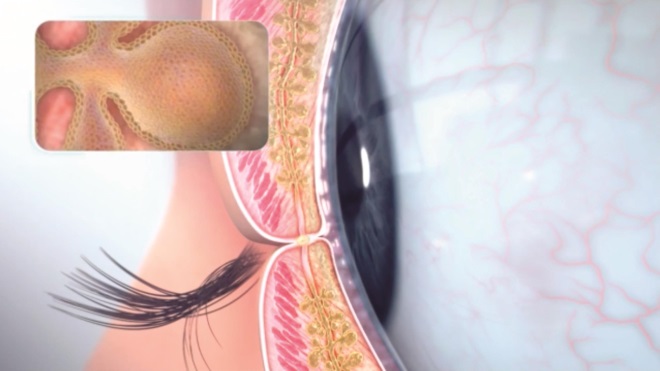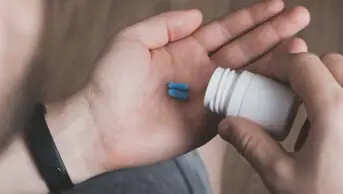
The following article has been commissioned, briefed and fully funded by RB.
Liposomal sprays are specifically designed to address evaporative dry eye (EDE) symptoms. EDE accounts for approximately 80 per cent of dry eye cases[1]
, with about 20 per cent suffering from aqueous deficient dry eye[1].
However, the mode of action and method of application of liposomal sprays are not always well understood, in particular, it can be complicated to explain how a liposomal spray reaches the surface of the eye after being applied to a closed eyelid.
This article is intended to help pharmacists understand and convey the benefits of liposomal sprays to sufferers of dry eye, by considering their mode of action in relation to the stabilization of the tear film.
What are liposomal sprays?
Liposomal sprays, like OptrexTM ActiMistTM, contain soy lecithin, a phospholipid, which is encapsulated within microscopic spherical liposomal vesicles. Soy lecithin is an emulsifier, which due to its bipolar nature enables the water and oil layers of the eye to work together.
How do liposomal sprays work?
In 80 per cent of people with dry eye, the cause is deficiency or instability of the lipid layer of the tear film
[1] which normally acts as a seal for the watery aqueous layer, preventing it from evaporating (see figure 1).

Figure 1: The tear film
Three main layers make up the normal tear film. In 80% of people with dry eye, the cause is deficiency or instability of the lipid layer
The tear film lipid layer is made up of two phases: a thick outer neutral layer in contact with the air, and a thinner polar layer made up mainly of phospholipids which forms an interface with the tear film aqueous layer. It is this phospholipid layer which facilitates spreading of the outer lipid layer[1]
. Research has shown that individuals without a visible lipid layer, or with a nonconfluent lipid layer, exhibit a four-fold higher rate of tear film evaporation[
2]
.
However, a study has revealed that the use of liposomal sprays results in a clinically and significant increase in lipid layer thickness and tear film stability following application[3]
, while another concludes that treatment with phospholipid liposomes shows statistically significant clinical advantages with better results in the lid parallel conjunctival fold (LIPCOF) test, tear film break-up time (BUT), Schirmer-I test, tear meniscus measurement, inflammation of the lid margins, and visual acuity, compared to conventional artificial tears treatment[1]
.
The liposomal spray delivers phospholipid to the eye, helping to repair the lipid layer, thereby addressing the lipid instability that causes EDE. The spray should be applied to the closed eyelid from about 10cm away (see figure 2). The eyelids should be kept closed afterwards to enable the phospholipid liposomes to settle on the eyelid, where they warm up and start to migrate towards the edge of the eyelids. Once they reach the edge of the eyelid, blinking distributes the liposomes over the aqueous layer of the tear film, producing instant relief[1],
[4]
.

Figure 2: How Optrex ActiMist reaches the surface of the eye
After applying the spray to the closed eyelid, blinking distributes liposomes evenly over the aqueous layer of the tear film
Evidence of the mechanism of action
Research into the action of liposomal sprays mixed with a fluorescein dye solution onto closed lids illustrates how the sprayed-on solution reaches the lid margins and the tear film within a few minutes. After application to closed lids, and only a few blinks, fluorescein is visible in the tear meniscus
[1].
This is similar to what happens naturally when lipids are secreted from the meibomian glands (see figure 3) on to the lid margins where they form a reservoir. Blinking puts pressure on the meibomian glands, resulting in a small amount of oil being expressed onto the lid margins, and the lipids that were part of the tear film mix once again with the lipid reservoir on the lid margin. During the opening of the lids, some of the lipids from this reservoir spread onto the tear film, forming a lipid layer[1]
.

Figure 3: Meibomian glands
In evaporative dry eye, the meibomian gland (pictured inset) fails to secrete enough oil to maintain the lipid layer of the tear film
The sprayed-on phospholipid liposomes reach the lid margins via the same effect and mix with the endogenous lipids to help repair the tear film lipid layer
[1].
What are the benefits of liposomal sprays?
Unlike liposomal sprays, many aqueous artificial tear ocular lubricants, which are commonly used to treat dry eye symptoms, are not specifically designed to address the disrupted lipid layer in EDE; instead, they temporarily bathe the eye producing transient symptomatic relief and can require frequent application.
Liposomal sprays help stabilise the outer lipid layer
[1] to ease the irritation and discomfort of evaporative dry eye. They provide instant relief and last for up to four hours[1],[4]
, meaning they need to be applied less frequently than some dry eye products.
Liposomal sprays are also convenient, as they can be used by people who wear contact lenses, and because of the liposome formulation, they won’t smudge makeup. Moreover, they can be useful for patients with coordination problems, or dexterity issues or for those who just find it difficult to use drops. Unlike many eye preparations, once opened, they have an expiry of up to six months and Optrex ActiMist is packaged in a sealed bottle with a non-vented pump.
Community pharmacy role
Around 40% of community pharmacies see at least one patient a day* who has a concern about their eyes and studies show that up to 30 per cent of the population over the age of 50 experience dry eye symptoms on a regular basis[5]
.
Despite this, a 2016 survey of pharmacists*, showed that two out of three respondents were unaware that there are different types of dry eye condition, which have different aetiology, and therefore required different management.
By recommending liposomal spray for the treatment of EDE, explaining how to use it and importantly, how it works when sprayed on closed eyes, pharmacists can help contribute to ensuring patients receive a treatment that is appropriate, acceptable and will help relieve the symptoms of dry eye.
*2016 Pharmaceutical Journal survey of members (1,350 respondents).
Optrex ActiMist 2in1 for dry and irritated eyes is a medical device.
References
[1] Dausch D et al/ Klin Monatsbl Augenheikd 2006; 23;974-983. Accessed August 2016. www.tearsagain.cz/studie/Study3_Comparative.pdf
[2] Craig J.P. et al. Effect of a liposomal spray on the pre-ocular tear film. Cont Lens Anterior Eye. 2010 Apr; 33(2):83-7. Accessed August 2016. www.ncbi.nlm.nih.gov/pubmed/20096622.
[3] Craig JP et al. Effect of a liposomal spray on the preocular tear film. Poster session presented at: 5th International Conference on the Tear Film & Ocular Surface: Basic Science and Clinical Relevance5-8. September, 2007; Taormina, Sicily.
[4] Khaireddin, R. et al. Comparative Investigation of Treatments for Evaporative Dry Eye Klin Monbl Augenheilkd. 2010 Feb;227(2):128-34. Accessed August 2016. www.ncbi.nlm.nih.gov/pubmed/19757354
[5] The epidemiology of dry eye disease: report of the Epidemiology Subcommittee of the International Dry Eye Workshop (2007). 2007;5(2):93-107. Accessed August 2016. www.tearfilm.org/dewsreport/pdfs/TOS-0502-DEWS-noAds.pdf



